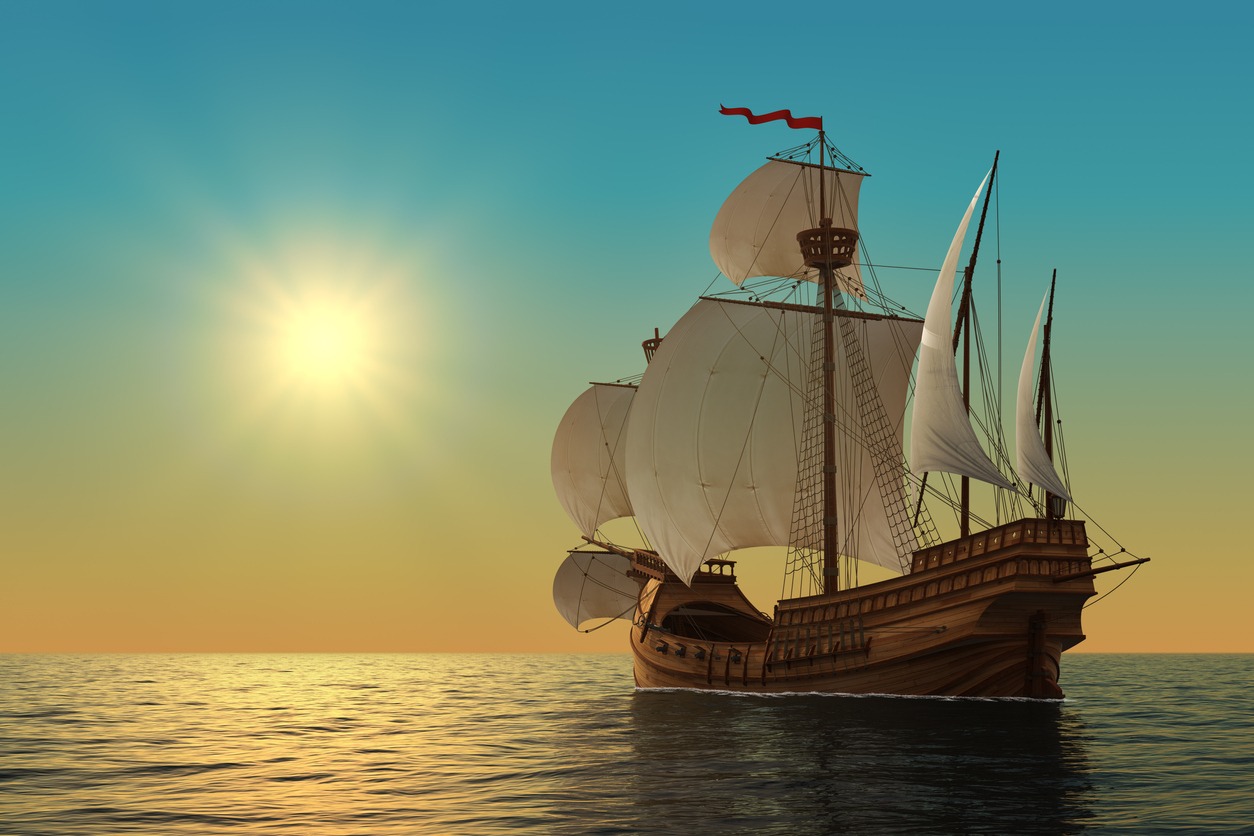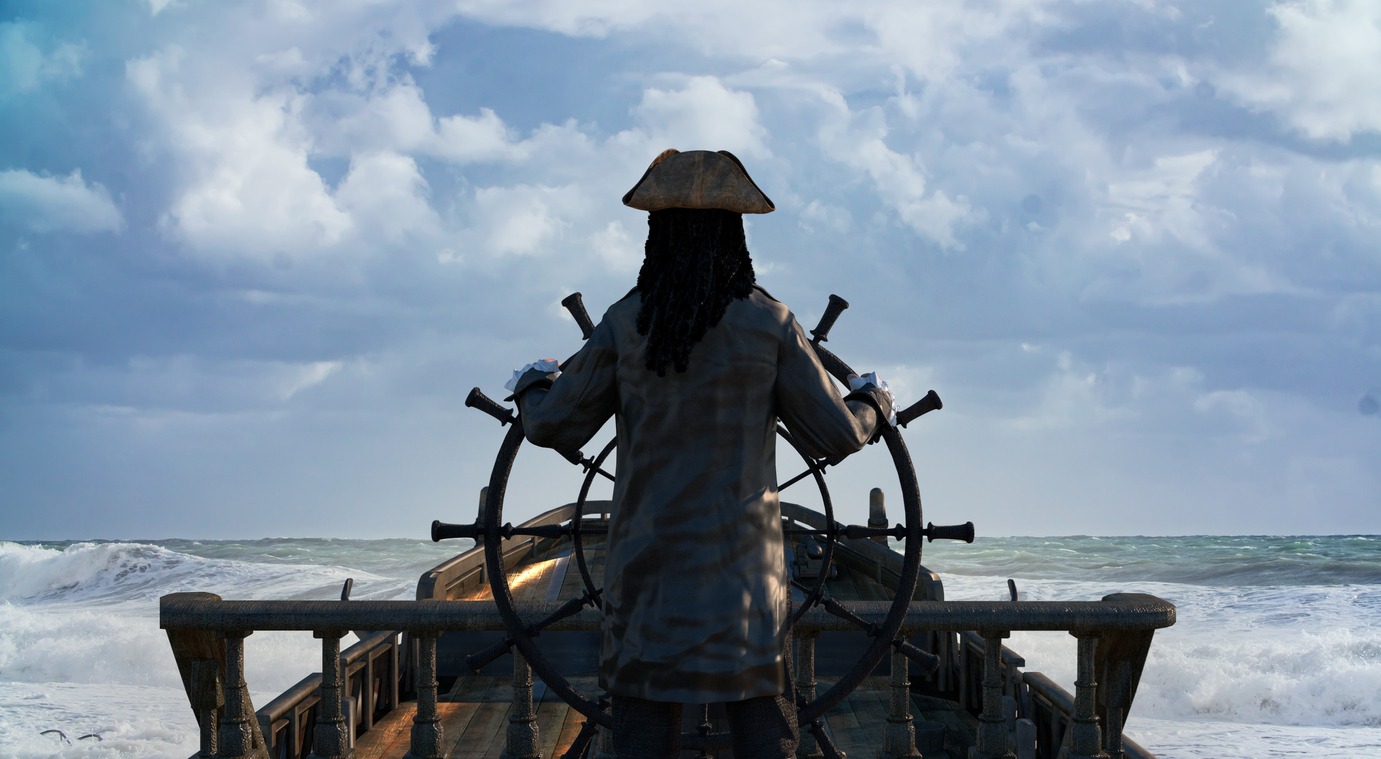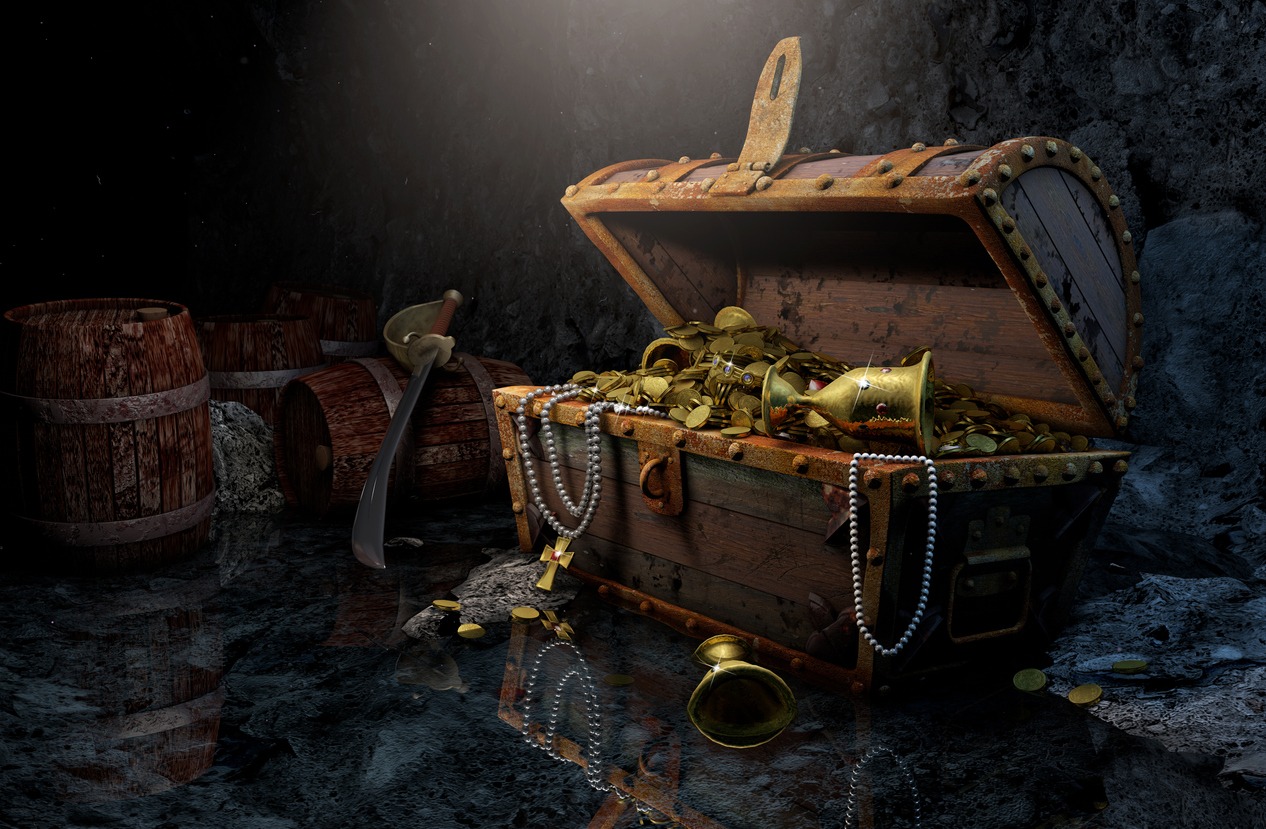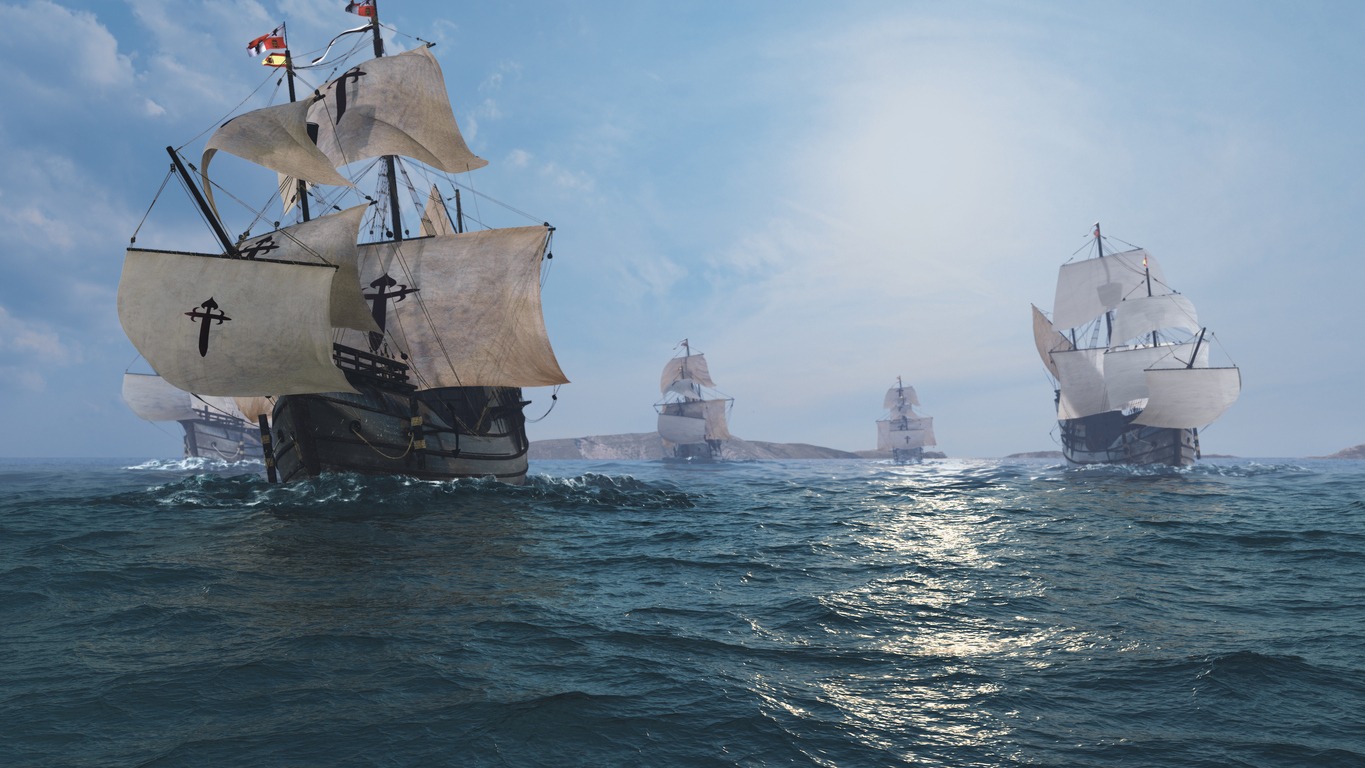Boat captains ensure the safe and efficient operations of vessels. They steer everything and have a clear vision in commanding and navigating the ship.
With the long history of boating and seafaring, no captain becomes famous worldwide by keeping it safe. The most famous ones are, either, pioneering expeditions that bravely traveled in the unknown or were involved in epic stories of danger and challenging adventures.
Here are some of the real-life, famous boat captains of history.
James Cook (1728 – 1779)
Captain James Cook was a British explorer, navigator, cartographer, and captain of the Royal Navy known for mapping the Pacific, Australia, and New Zealand, which changed the Western perceptions of world geography.
Cook learned navigation, geometry, and astronomy when he signed up with the merchant navy while trading in small sailing ships.
He sailed and achieved the first recorded European contact with the eastern coastline of Australia and the Hawaiian Islands, where James and his crew became the first Europeans to set foot in Eastern Australia. He also achieved the first recorded circumnavigation of New Zealand in greater detail.
Cook was attacked and eventually killed by the natives because he attempted to kidnap the Hawaiian chief to reclaim the cutter stolen from one of his ships. He left a legacy of geographical and scientific knowledge that influenced a lot of scientists in the 20th century.
Bartholomew Roberts (1682 – 1722)
Bartholomew Roberts, also known as Black Bart, was a Welsh pirate and one of the most successful in the Golden Age of Piracy as measured by the ships captured. He captured and looted around 400 vessels during his infamous three-year career, far more than any other pirate.
Interestingly, his real first name was John Roberts. Roberts had no wish to join the pirates, but he had no choice. His nickname Black Bart was attributed to his dark hair and complexion.
Black Bart died in a battle against British Captain Chaloner Ogle on 10 February 1722. He was shot in the throat by metal fired as grapeshot from one of Swallow’s cannons.
John Rackham (1682 – 1720)
John Rackham was an English pirate captain known as Calico Jack because of the calico clothing that he wore, while Jack is a nickname for John. He was most famous for two things: First, he designed his pirate flag, the Jolly Roger flag, which is a skull with two crossed swords, and second, for having two female crew members, Mary Read and his lover, Anne Bonny.
He navigated the waters of the Bahamas and Cuba as a pirate. Jack’s Jolly Roger flag was to warn victims to surrender without resistance. He was found guilty on four charges of piracy and hanged in Port Royal, Jamaica on 18 November 1720.
Edward Teach (1680 – 1718)
Edward Teach, sometimes recorded as Edward Thatch and better known as Blackbeard, was one of the most feared and perhaps the cruelest pirates of all time. He was an English pirate who navigated the West Indies and the eastern coast of Britain’s North American colonies.
He became a captain on one of the ships he stole and started preying on ships. He projected a fearsome image with his thick, black beard, as well as by coiling lit fuses under his hat and by slinging multiple pistols and daggers across his chest to elicit the response he desired from those he robbed.
At the height of his career, he defeated the famous warship HMS and its pirate army of 300 in a sea battle. He was famous for battling with two swords, several knives, and pistols ready. He captured more than 40 merchant ships in the Caribbean and killed many prisoners without flinching.
Blackbeard was killed in a bloody battle at the mount of the Okracoke Inlet with the British Navy. Legend has it that he received 20 stab wounds and five gunshot wounds before finally succumbing.
William Kidd (1645 – 1701)
William Kidd was a Scottish sailor and one of the most well-known pirates of all time remembered for his execution for piracy on the Indian Ocean. He was the captain of a powerful ship as ordered by King William III of England to capture the French ships and the pirates of Madagascar. But oddly enough, he soon turned into a pirate as he recruited a gang of cutthroats and sailed for Madagascar.
In 1968, he bagged his biggest loot by taking the Quedagh Merchant, a 500-ton Indian ship loaded with gold, silver, satins, muslins, and a wide variety of East Indian merchandise.
Kidd was hanged in London in 1701 for piracy after returning from a voyage to the Indian Ocean. It was believed that he buried his treasures in the Caribbean. Nevertheless, he remains one of history’s most famous and fascinating pirates.
Henry Morgan (1635 – 1688)
The face of a famous brand of spiced rum, Henry Morgan was a Welsh buccaneer who was known for plundering Spain’s Caribbean colonies during the late 17th century. He was also a plantation owner and, later, Lieutenant Governor of Jamaica.
Morgan spent 20 years raiding Spanish ships and became wealthy with sugar plantations in Jamaica. His greatest achievement in the seas was capturing Panama City with more than 30 ships and around 2,000 men. He also allegedly ordered his men to lock the residents of Puerto Principe, Cuba, inside a church so the plundering in town was unhindered. He also captured Porto Bello, Panama, creating a human shield out of priests, women, and the mayor. Over the years, he led brutal raids against two towns in Venezuela and Panama City.
Despite being arrested in April 1672 due to his raid in Panama City, he was sent out in 1674 as deputy governor of Jamaica because King Charles II knighted him. He lived as a wealthy and respected planter until his death.
Francis Drake (1540 – 1596)
Known as a hero in the battle against the Spanish Armada in 1588, Francis Drake was a sea captain, explorer, and a self-made Elizabethan privateer licensed by the English government to attach Spanish shipping. His most famous voyage lasted from 1577 to 1580, when he became the first English captain to circumnavigate the world.
On this three-year expedition around the world, he lost four of his five boats, raided various Spanish ports, captured a Spanish vessel filled with treasures, and executed a subordinate for allegedly plotting a revolt. He even rescued the unsuccessful English colonists of Roanoke Island off the coast of the Carolinas. Along the way, he claimed a portion of California, which was unexplored at the time, for Queen Elizabeth I. After his return, the delighted queen awarded him a knighthood in 1581.
After a magnificent career, Drake died off the coast of Panama in 1596 due to a disease. Francis Drake was buried at sea, wearing full armor and encased in a lead-lined coffin. The treasure hunters, divers, and Drake enthusiasts continue to search for his final resting place.
Ferdinand Magellan (1480 – 1521)
Ferdinand Magellan was a Portuguese explorer who captained the Spanish expedition to the East Indies from 1519 to 1522, which shattered the belief that the world was flat. It resulted in the first circumnavigation of the Earth.
Magellan also organized the first expedition across the Atlantic Ocean to the Strait of Magellan and across the Pacific Ocean. He could not finish the first circumnavigation of Earth himself because, in 1521, he was killed in the Battle of Mactan in the Philippines. However, the job was completed by Juan Sebastián Elcano after his death.
Christopher Columbus (1451 – 1506)
Regarded as the man who discovered America, Christopher Columbus is one of the most famous explorers around the world. He captained the ship on one of these voyages to America, though it was an accidental discovery. Columbus originally planned a quest for Asia to bring back cargoes of silks and spices. He failed to get royal support in England and France, but he finally found backing from the king and queen of France amid hopes for Portuguese expansion. The Crown of Castile sponsored his voyages. His voyages marked the start of European exploration and colonization of American continents that shaped Western history.
Columbus always insisted that America was part of the Asian continent, even with contrary pieces of evidence. His refusal to accept it is part of why the American continent was named after the Florentine explorer Amerigo Vespucci and not after him.
Finally, boat captains in history faced challenges and victors. Their power of command was tested and strained, and each faced hazardous and extreme challenges to their leadership. They may be the cruelest, the discoverer, or the exploiter, but once and for all, they do have heroic prowess, especially to their crew.



